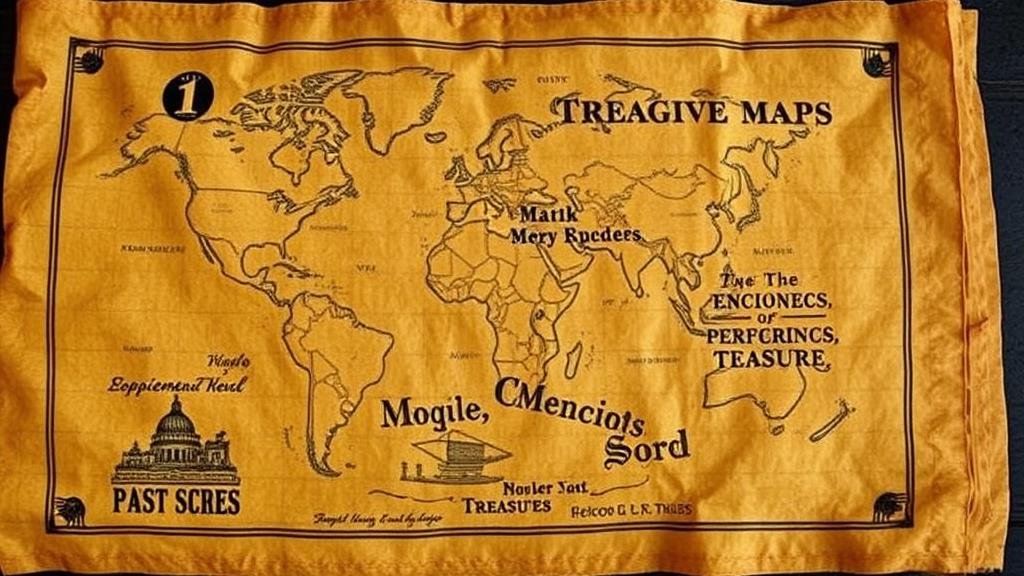Applying Cryptologic Techniques to Crack Encoded Treasure Maps
Applying Cryptologic Techniques to Crack Encoded Treasure Maps
The allure of treasure maps has captivated generations, often serving as a beacon of adventure and discovery. But, the actual task of deciphering encoded treasure maps requires a combination of cryptologic techniques, historical context, and analytical skills. This article delves into how these methods can be applied practically to decode hidden messages and locate buried treasures.
Understanding the Basics of Cryptology
Cryptology, the art and science of encoding and decoding messages, encompasses two main branches: cryptography (the creation of codes) and cryptanalysis (the breaking of those codes). To successfully decode a treasure map, one must first understand the various encoding techniques that could have been employed, which can range from simple ciphers to more complex systems.
- Substitution Ciphers: This involves replacing letters or symbols with other letters or symbols. For example, a simple Caesar cipher shifts each letter a specific number of places in the alphabet.
- Transposition Ciphers: Unlike substitution, this technique rearranges the letters of a message according to a predetermined system, making it vital to have a key to decode the information.
- Digital Encoding: With the advent of technology, more sophisticated encoding methods such as ASCII, binary, and hexadecimal have emerged, requiring knowledge of digital formats.
Historical Context of Treasure Maps
To effectively apply cryptologic techniques, one should consider the historical context of treasure maps. Many famous maps, such as those attributed to pirate lore, often included cryptic symbols and texts that were intended to throw off potential rivals and protect treasure locations.
For example, the infamous Maps of Captain Kidd contained various symbols that represented natural landmarks and hidden pathways, necessitating rigorous analysis to discern their meaning. By combining historical knowledge with cryptological methods, one can piece together the clues left by past adventurers.
Decoding Techniques: Case Studies
Several case studies exemplify how cryptologic techniques have been applied to treasure maps in real-world scenarios. These examples serve to illustrate the practical applications of the theories discussed and demonstrate the systematic approach needed for effective decoding.
- The Oak Island Mystery: For centuries, treasure seekers have tried to uncover the secrets of Oak Island in Nova Scotia, Canada. Researchers have applied cryptanalysis to various maps that purportedly lead to riches buried on the island. By using frequency analysis on the encoded letters, they have made progress in decoding parts of these maps, identifying potential digging sites.
- The Vinland Map: A controversial historical artifact, the Vinland Map claims to depict Norse explorations in North America. Cryptologists examined this map using modern material analysis techniques to confirm the authenticity of its inscriptions. This example emphasizes how interdisciplinary methods can enhance the understanding of encoded documents.
Tools and Technologies for Decoding
The advancement of technology has significantly transformed how cryptology is applied to treasure maps. Several software tools and programming languages, such as Python, are now leveraged for cryptanalysis, allowing treasure hunters and researchers to automate the decoding process.
- Cryptographic Software: Programs like CrypTool provide users with a platform to simulate various cryptographic techniques, making it easier to understand how different ciphers function.
- Data Visualization Tools: Tools that allow for graphical representation of data can help in pinpointing potential treasure locations based on the decoded information from a map.
Real-World Applications and Actionable Takeaways
The principles of cryptology applied to treasure maps have broader implications beyond mere treasure hunting. These skills can enhance logical reasoning and analytical thinking, applicable in various fields such as law enforcement, cybersecurity, and espionage.
- Analytical Thinking: Engaging with cryptology develops problem-solving skills, beneficial in both personal and professional contexts.
- Cross-Disciplinary Knowledge: Understanding historical context, geography, and symbolism combines to create a robust skill set that is applicable in multiple domains.
To wrap up, applying cryptologic techniques to crack encoded treasure maps involves a blend of historical understanding, analytical reasoning, and technological proficiency. By leveraging these skills, individuals can significantly enhance their chances of uncovering the secrets hidden within these enigmatic documents. Such methodologies not only enrich the pursuit of treasure but also foster critical thinking and interdisciplinary learning.



